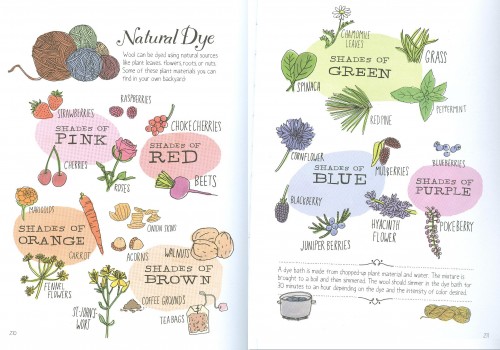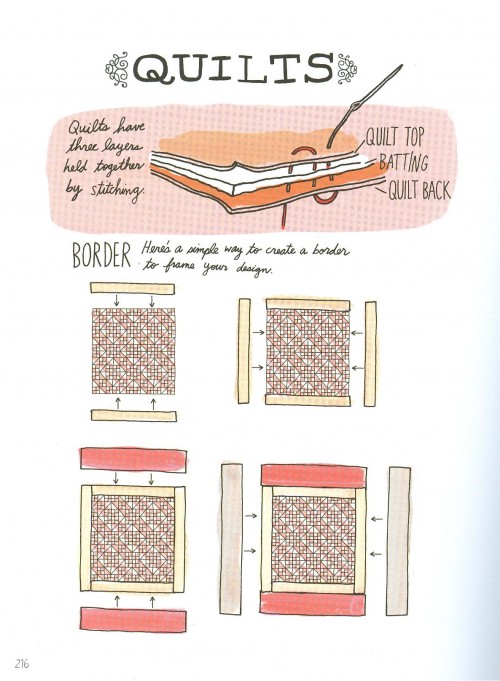Spinning a Yarn
I may have used affiliate links for some of the items in this post. Using an affiliate link to purchase an item won't cost you any more money, but I may receive payment if you click on a link and make a purchase. For more information, visit the disclosures page.
The 7th and final chapter in our book, Farm Anatomy: The Curious Parts and Pieces of Country Life is entitled Spinning a Yarn. This chapter of the book covers:
- Carding and spinning yarn
- Natural dyes
- How to make a flower press
- How to make a corn husk doll
- Making rag rugs
- Making candles
- Quilt patterns
Of course, with my love of crafts, I am particularly fond of this chapter. I found the natural dyes chart to be particularly interesting.
For instance, I was completely unaware that you could use carrots to dye things, let alone acorns and walnuts. I would love to try it sometime. I wonder how well the colors hold up. Have any of you ever made your own dyes?
Another thing that I particularly liked about this was the section on quilts. As I’m sure you know from my blog, I like to quilt. I’m working on several different quilts right now, including a Dear Jane quilt, a Crazy Quilt and one of my own design. You would think that I would just work on one and get it done, but I just don’t have the patience for that. The Dear Jane quilt requires me to make my own templates at the size I need based on the small sample patterns in my book. And my quilt is entirely in black and white, so sometimes I just get tired of looking at the lack of color on it. But at least all my pieces for that one are cut out.
Now my crazy quilt seems to be going pretty well at the moment. I’ve got an entire row of that quilt completed already. Well, almost completed. I am adding some embroidery and other embellishments to it still.
Do you have any awesome projects you’re working on right now? Has this chapter of the book inspired you to start some?



You use the husks kind of like making tea. I spun and knit John a sweater and used walnuts. Because of the tannin content it is color fast without mordants, also on plant fibers. You can use Koolaid and food coloring on protein fibers as well. Does it talk primarily about wheels or does it talk about spindles as well?
Why do you know so many smart words? There are two that I have to ask about Tannin and Mordants – what do they mean? I’ll recheck this section of the book to determine what part of spinning is covered. I know there wasn’t a ton of material, it’s more of an overview, but I don’t remember those exact topics without looking.
Tannin is an acid. It is also what turns water brown when you stick a piece of wood in it, or yellow depending on the amount of tannins in the wood. I first came across it when trying to figure out how to lower the ph of water in my aquarium. Mordants are what makes color “stick” to the fiber. Usually a metal. For instance, alum, chromium, iron, and I think copper too is used. I use an aluminum camp pot. Depending on the mordant it can alter the color. Most dye plants will stain, but mordants make them stick. The book I have on it is “Wild Color” I got some gipsywort (black) and amaranth (hopi red) seeds for the garden this year to try.
Sometimes I think you know way too much for your own good! 🙂 Also, I’ll send you a copy of the page with the spinning info. It’s not a lot, but it’s nice.
You could have some really interesting quilt fabric to work with if you dyed your own. plant fibers typically prefer an alkaline dye bath and protein fibers like acidic. Which is why I don’t understand why walnut works on both, but it would be very interesting!